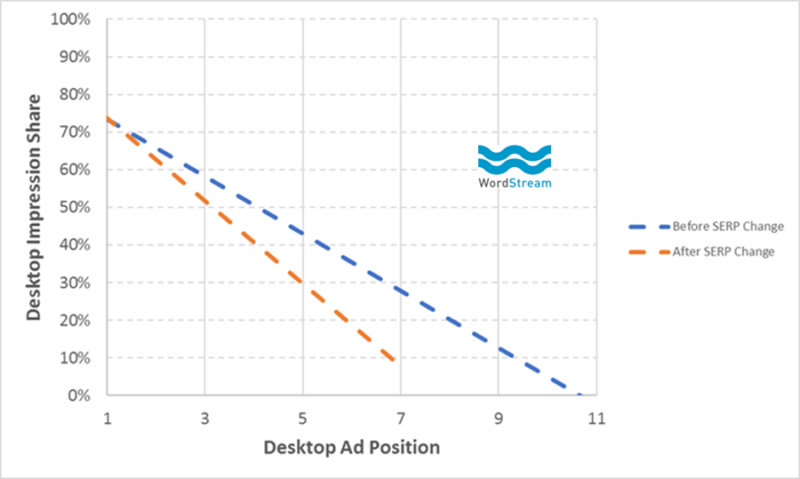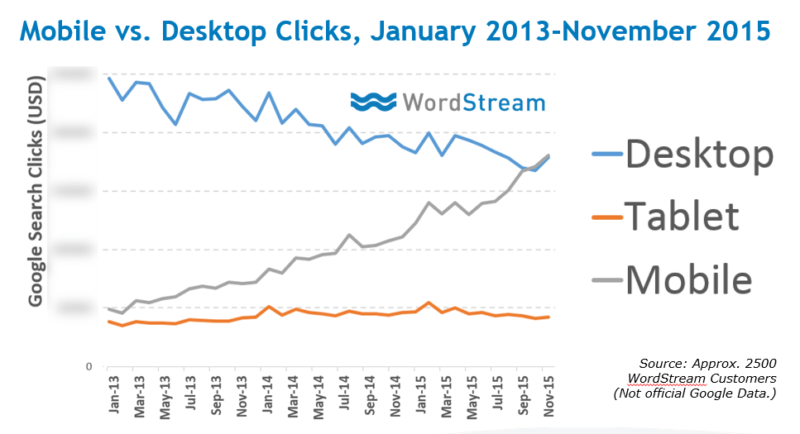Google’s right-side Adpocalypse: What really happened (DATA)
When Google changed its SERP display last month to eliminate ads in the right rail, many search marketers panicked. Now that the change has been live for a while, columnist Larry Kim looks at the data to determine what, if any, damage occurred.

About a month ago, Google confirmed the death of right sidebar ads for desktop search results. Search Engine Land paid media reporter Ginny Marvin put together a great FAQ on all the changes search marketers need to know about.
One of the big questions asked in Marvin’s post, and a hot topic of rampant speculation throughout the search industry, was how much CPCs would skyrocket.
If you listened to some people, you’d think the change to Google’s desktop SERPs was the end of the world and going to crush everyone in its path, especially small businesses.
Here’s just a sampling of comments on the change from Search Engine Land’s Facebook page:
“One thing’s for sure: Google wouldn’t have rolled this out if they weren’t sure they would make more money this way. Less ad-space, more earnings… you figure out what this means for CPC.”
“This will raise costs for advertisers, squeeze-out advertisers who a) can’t afford the higher competition and/or b) can’t figger [sic] out how to raise their Quality Scores, and send many advertisers to Bing/Yahoo, FB and other social-media platforms.”
“Going to raise cpc costs across the board.”
Perry Marshall cried “DANGER,” calling it the biggest Google AdWords shakeup in more than 10 years and warned: “Your strategy for Google AdWords is going to totally change.”
Well, now it’s nearly a month later, and the data are actually showing a very different story from the narrative — and by different story, I mean the same. Very little has changed. The sky hasn’t fallen.
Let’s dive into some of WordStream’s (my company’s) hot new data, collected from more than two thousand WordStream customers for the time period indicated in the charts (not official Google data).
Click-through rates (CTRs) are up
As the data from thousands of WordStream accounts spanning all industries show, CTRs are up. No real surprise here.
It was expected that having a fourth spot above the organic results would mean more ad clicks. The surprise, as I discussed in last month’s post, was that the ad in the third spot, not the fourth, got the biggest boost from the new desktop SERP layout.
Costs per click (CPCs) are static
Here’s one dire prediction I saw on Twitter: “No right side ads = hello 3x increase in CPCs.” Many marketers feared less ad space would result in CPCs going through the roof.
Well, this is why smart marketers don’t base their strategies on predictions. Because the data tell the actual story:
As I predicted when this change rolled out, CPCs haven’t jumped, let alone by 3x. If anything, CPCs have gone down some, as shown in the chart above.
Traffic is steady
More good news for PPC marketers: traffic, for the most part, has been steady. There have also been some modest wins:
So we’re looking pretty good, right? CTRs are up, and clicks are mostly constant. Does that mean impressions are down?
Impressions are down
Before the change, it was possible for searchers to see up to 11 ads per search results page. Now, after the removal of right-side ads on desktop, Google users will see no more than seven text ads.
So yes, this change has resulted in a decline of ad impressions. The loss of desktop impression share mostly affects those who appeared in the eighth position and lower:
Although this chart may look kind of catastrophic for those below position 7, it really isn’t a huge change. Why? Because positions 8–11 made up a mere 0.2 percent of all desktop impressions:
Anatomy of a “loser”
Every Google change has winners and losers. If a win in this case means higher CTRs, lower/steady CPCs and steady/more traffic, what does a “loser” look like?
In an effort to provide a thorough analysis, we set out to find examples of accounts that truly suffered as a result of Google’s removal of right ads from the desktop SERP.
It wasn’t easy. After poring through tons of accounts and data, however, we finally managed to find an interesting example from the financial industry. So let’s take a quick look at the “struggles” of one advertiser.
Prior to the change, they had an average position of 8.6 on desktop. After the new SERP rolled out, they got killed, losing 80 percent of their desktop impressions:
But here’s where it gets interesting. Their CTR more than doubled:
As a result, the advertiser only lost 15 percent of their desktop clicks, which fell from 26 to 22:
Also interesting is that this advertiser saw its CPC increase from $0.53 to $0.69:
But wait! It gets even more interesting, because their average position went from 7.5 to 4.3 after the change.
So, overall, not a terrible deal for this “loser.” This advertiser is now paying $0.16 more per click, but it’s for vastly more valuable space on the SERP.
The fact that an advertiser with an average position of 8.6 didn’t get wiped out — especially considering Google eliminated ad positions 8–11 from its SERPs — is of major significance.
What does it mean? Well, it leads me to believe that Google is sharing the impressions a little bit, as opposed to using a “winner takes all” approach.
Don’t believe everything you read on the internet (except this)
Okay, so here’s what we now know about what was overdramatized and overhyped as the biggest, most unfair, most dangerous change Google has ever thrown at us:
- Most advertisers are responding well to the change.
- Advertisers’ metrics seem to have mostly balanced out so far.
- Traffic and CPCs have remained relatively flat.
- The losers are those who were at the bottom (positions 8–11). But even then, it’s nearly impossible to find examples of advertisers that have been totally and utterly annihilated.
Finally, it’s important to remember that this change is exclusive to desktop. Regardless of how you spin the numbers, it’s clear that desktop is becoming less of a focal point for Google:
Remember, brave search marketers: The only thing we have to fear is… ridiculously uninformed speculation. Don’t panic whenever Google changes something.
Be patient. Collect and analyze your data. React smartly.
This wasn’t the first huge change we PPC marketers have lived through. But if you want one prediction you CAN take to the bank: It definitely won’t be the last!
Contributing authors are invited to create content for Search Engine Land and are chosen for their expertise and contribution to the search community. Our contributors work under the oversight of the editorial staff and contributions are checked for quality and relevance to our readers. The opinions they express are their own.
Related stories
New on Search Engine Land










